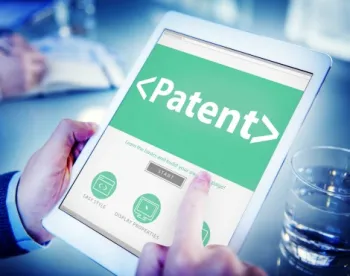The US Court of Appeals for the Federal Circuit reversed a district court’s summary judgment grant of non-infringement because it was improperly granted on a ground that was not asserted by the accused infringer. NeuroGrafix et al. v. Brainlab, Inc., et al., Case No. 18-2363 (Fed. Cir. Oct. 7, 2019) (Taranto, J).
NeuroGrafix owns a patent directed to a method for generating images of nerves and other bodily structures using diffusion tensor imaging (DTI), an application of MRI technology. DTI exploits certain characteristics of water diffusion. Diffusion along white matter nerve tracts is anisotropic, meaning substances such as water diffuse freely along the main, long axis of the nerve tract. However, diffusion is very limited in a direction perpendicular to (across) that axis. By contrast, the surrounding gray matter is relatively isotropic, meaning substances diffuse at similar rates in all directions. NeuroGrafix’s patent claims a method for exploiting these difference by applying pulsed magnetic field gradients in two orthogonal directions so that neural tissue can be identified and visually differentiated from the surrounding structures by determining the areas of greater relative anisotropy.
NeuroGrafix sued Brainlab for patent infringement, alleging that users of Brainlab’s FiberTracking software directly infringed NeuroGrafix’s patent and that Brainlab induced direct infringement by its users through statements in its manual and advertisements. After discovery, Brainlab filed a motion for summary judgment of non-infringement, arguing that users of the FiberTracking software did not satisfy the “selected structure” limitation of the asserted claim. Brainlab argued that “selected structure” requires that a user know the “existence and location” of the structure of interest before performing the claimed method, and it was impossible for users of FiberTracking to “select[] structures” before scanning, since the software does not allow users to isolate or select specific structures before scanning.
NeuroGrafix opposed the motion, arguing that “selected structure” does not require that the precise location and orientation of the chosen structure be known in advance, and, in any event, users could satisfy the claim by (for example) obtaining a preliminary MRI image, choosing a structure that would be “distinctive and visibly apparent” from the preliminary image (such as a pyramidal tract) and then performing the steps of the claimed method with the chosen structure as the subject. NeuroGrafix also argued that Brainlab’s advertisements stated that users can employ the software to image the pyramidal tract, and Brainlab’s manual instructed users to select fiber bundles to include or exclude a region of interest.
The district court granted Brainlab’s motion but rejected Brainlab’s argument that some aspects of the “selected structure” must be known in advance. The court found that depending on the physician’s purpose, FiberTracking was capable of both infringing and non-infringing uses. Nevertheless, the court granted Brainlab’s motion because NeuroGrafix had not pointed to evidence that any FiberTracking users actually used the software in an infringing manner. The court also found that instances of direct infringement and inducement could not be inferred from statements in Brainlab’s advertisements that it was “possible” to create preliminary images, since those statement did not actually teach an infringing use of the device. NeuroGrafix appealed.
The Federal Circuit reversed the grant of summary judgment, finding that it was procedurally improper. The Court found that the district court’s determination that the FiberTracking software was capable of infringing and non-infringing uses was sufficient to defeat summary judgment, since NeuroGrafix demonstrated a genuine dispute of material fact on the only issue raised by Brainlab, namely whether FiberTracking was capable of infringing use. The Court explained that it was procedurally improper for the district court to grant summary judgment on a ground that was not asserted by the movant or made subject of the action such that the non-movant had notice of the obligation to come forward with all supporting evidence. The Court found that evidence of actual infringing use was unnecessary to answer the only grounds for summary judgment asserted by Brainlab, and that granting summary judgment on grounds not asserted was improper. The Court reversed the grant of summary judgment and remanded for further proceedings.
Practice Note: The Federal Circuit noted that while the summary judgment decision here was procedurally improper, NeuroGrafix could not sustain a claim of direct infringement by merely showing that the accused software was capable of operating in an infringing manner. NeuroGrafix must show that the software was actually used in an infringing manner by Brainlab (for direct infringement) or by one or more of Brainlab’s customers (for indirect infringement).




 />i
/>i

